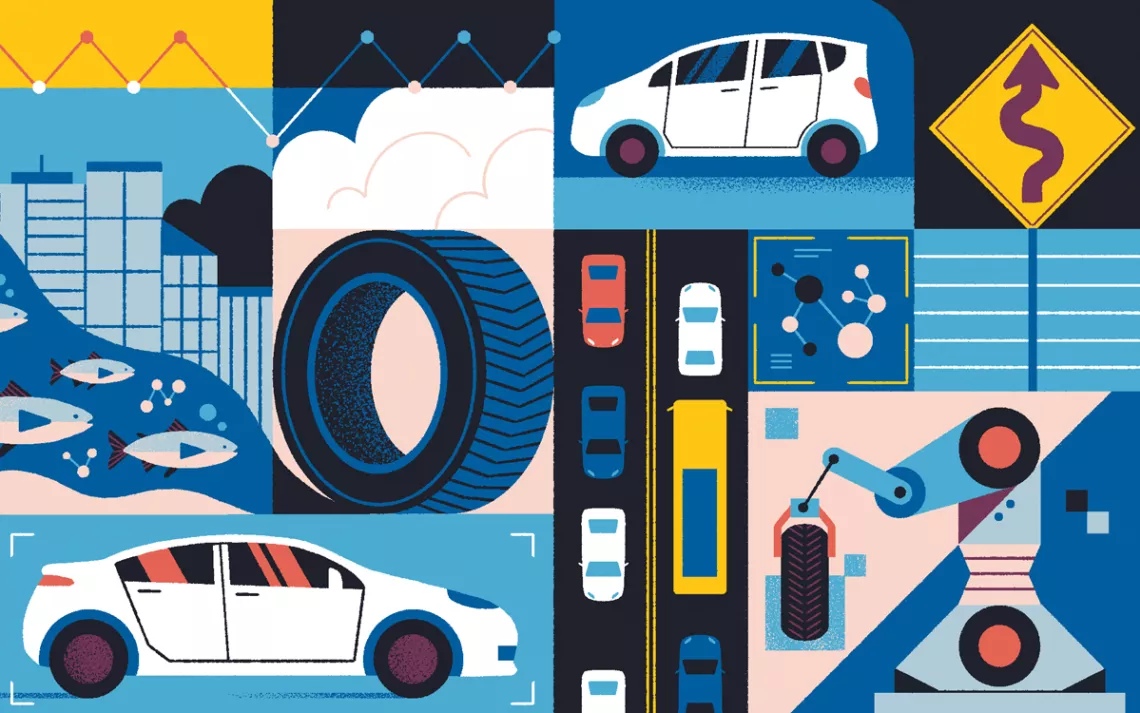Can GM Keep Its Promise to Abandon the Internal Combustion Engine?
The automaker could meet its self-described “stretch goal”—if the stars align

Photo by AP Photo/David Zalubowski
In case you missed it, General Motors made headlines around the world last month when it announced that it was on track to eventually abandon the internal combustion engine. “General Motors to Eliminate Gasoline and Diesel Light-Duty Cars and SUVs by 2035,” said The Washington Post. “GM to Phase Out Gas- and Diesel-Powered Vehicles by 2035,” echoed The Wall Street Journal. The automaker then backstopped its announcement with a cheeky Super Bowl ad starring comedian Will Ferrell that promised, “We’re coming, Norway,” referencing the country with the highest EV market share.
This is huge, right? The company, once the world’s biggest automaker and firmly associated with gas-guzzling pickup trucks and SUVs like the Chevrolet Suburban, is supposedly saying goodbye to internal combustion by an explicit date that’s in the ballpark with tentative deadlines given by three US states, European countries such as Great Britain, Sweden, France, and Spain, and—this is the big one—China, which has the world’s largest auto market.
But before we pop the organic champagne, let’s rewind a bit. What did GM, which after all aligned with the Trump administration in rolling back the Obama-era fuel economy regulations, actually say? It said the company has “an aspiration [my emphasis] to eliminate tailpipe emissions from new light-duty vehicles by 2035.” That’s not a firm commitment, is it? Some environmental advocates and electric vehicle enthusiasts are skeptical. “GM doesn’t actually say it will end gas-guzzler production by 2035,” said Dan Becker, director of the Safe Climate Transport Campaign at the Center for Biological Diversity. “It’s a goal.”
To its credit, the company is up-front about the aspirational nature of its announcement. “The central point is that we made a firm commitment to carbon neutrality by 2040,” Jessica James, assistant manager of sustainability communications at GM, told Sierra. “That is happening. But some things need to come together to meet the 2035 deadline—it’s out of our direct control.”
James said GM wants to see an expansion of the EV tax credit for electric vehicles, more government investment in EV infrastructure, and federal research money for next-generation battery research. “Those things together could get us to the big inflection point, with customers opting for EVs en masse,” she said. “Think of it as a stretch goal. We think we can get there, but it will take a massive effort.”
Or, in other words, GM’s ability to meet its goals is contingent on other policy and market stars aligning. “No one is holding them to this,” said Mike Ramsey, a vice president and analyst at the business consulting firm Gartner. “I think GM is serious in the sense that it is an aspirational goal. If the market doesn’t move that way fast enough, they aren’t going to stop making engines and gas tanks just because they said they would. Consumers need to make the switch in big numbers.”
Car collector Jay Leno, host of Jay Leno’s Garage, had a similar take. “It’s admirable that GM made that statement—now they have to meet it,” Leno told Sierra. Leno is a well-known lover of historical horsepower, but he’s also an enthusiast for green cars—putting 90,000 miles on his Chevrolet Volt, which he says he has had to fuel with gasoline only once a year. Leno thinks that in the future today’s collectible Mustangs, Ferraris, and Corvettes could be relegated to rare recreational or track use, while electric cars rule the roads. “Technology moves at a voracious rate,” Leno said. “Give the engineers a task and they can comply. If you’d said in 1965 that GM would be able to build a 2021 Corvette with 500 horsepower that gets nearly 30 miles per gallon on the highway, people would have laughed.”
While Leno is likely right that in the long-term today’s gas guzzlers will eventually be collectibles and curiosities, the fact remains that American drivers haven’t made the big switch yet. In 2019, Americans bought 330,000 battery-electric and plug-in hybrid vehicles, less than 2 percent of new cars and trucks sold. BloombergNEF estimates that EVs will be 28 percent of global passenger sales in 2030 and still only 58 percent by 2040. If those numbers are accurate, GM’s target could be ahead of the market. That makes GM’s stretch goal seem like a bit of smart marketing.
Environmentalists have reasons to be wary of GM, given its earlier moves, which include abandoning—weeks after last year’s election—a Trump-era lawsuit against California’s unique ability to set its own tough fuel economy and emissions standards. “How can we trust GM and other automakers’ promises when they repudiated their commitment to abide by the standards they negotiated with Obama?” Becker asks.
Some green-car advocates nonetheless welcomed the pivot, conditional though it may be. Says Plug In America executive director Joel Levin, “We applaud General Motors for making a commitment to shift to electric vehicles and phase out their gas and diesel engines by 2035. However, we are also eager to see the cars arrive in dealer showrooms as soon as possible. We would not want a long-term commitment to EVs to take away from efforts to start bringing cleaner vehicles to the market now.”
EVs have to “go wide” with mainstream appeal, but early adopters tend to be very green. A recent Plug In America survey found that 60 percent of EV-owning respondents cite the environment and air quality as a “most important” reason for buying the car, and 96 percent said their next purchase will be electric too.
While the GM announcement is a big deal given the company’s size, some automakers have made more ambitious statements that have less wiggle room than GM’s. Volvo, for example, says that 50 percent of its sales volume will be fully electric by 2025. And, surprisingly enough, following suit is venerable luxury carmaker Bentley, with its “Beyond 100” strategy. “We will completely transition to an electric-powered offering by 2030,” Bentley said.
The fact is, nearly every automaker is doubling down on EVs and planning for their future dominance. The arrival of the EV era isn’t really a question of if but when. “GM’s announcement to be all-electric by 2035 signals the direction they are moving in, but timelines are fairly uncertain,” said Jessica Caldwell, executive director of industry insights at the automotive forecasting firm Edmunds. “And, of course, 14 years is a long time. GM’s timeline could be expedited or it could be extended. But the Detroit company is sending a signal that they intend to be in this market. And though they are a part of the old guard, they are insistent on changing with the times.”
There’s no question that the times are changing, and that the old guard is under pressure from a new vanguard. Companies like Tesla are unveiling new EV models that may convince us to forget all about yesterday’s muscle cars. The Tesla Model S Plaid edition rockets to 60 miles per hour in less than two seconds and can reach 200 mph. And let’s not forget Rimac, the Croatian hypercar company whose electric CTwo is reportedly even faster. For Rimac, EV prowess has led to lucrative supplier contracts with Jaguar, Hyundai, and others.
Developing a new car is a four- or five-year proposition, which means that automakers have to plan for a future landscape that doesn’t yet exist. It’s clear that GM, after surveying the market signals and political trends, is laying down a road map for an all-electric future. And, at the same time, it’s also clear that GM is giving itself just enough space to swerve back toward the status quo. All of which provides an incentive for environmentalists and EV advocates to keep a close eye on GM and other legacy automakers, making sure they stick to their big promises
 The Magazine of The Sierra Club
The Magazine of The Sierra Club



